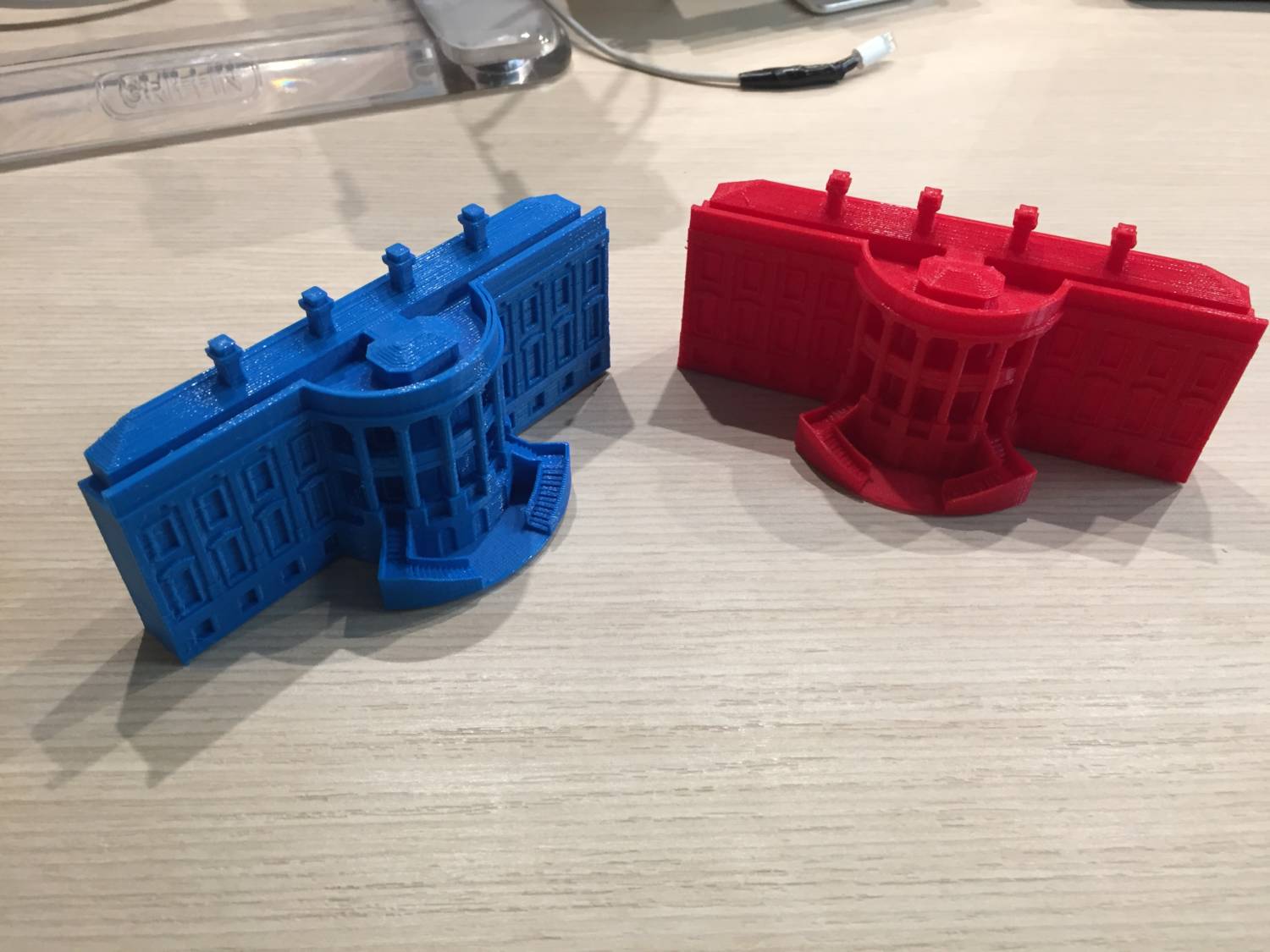CNN’s Magic Wall has long been an interesting (and at one point innovative) way to see election night results in real time. Today, news organizations and journalists are trying out some new experiments in both high- and low-tech election night visualizations.
At The Washington Post, you can watch two 3D printers duel-build tiny replicas of the White House in red and blue while a designer and developer Tim Meko fills in the map by hand on a white board in the background. Each model represents the 270 votes needed to win the electoral college, said Jeremy Gilbert, director of digital initiatives. The candidate who gets there first will end up with a completed White House (in red or blue, of course, depending.)
At one point, Gilbert thought about creating a Lego White House to show the results, but when he saw that Mashable used the clicking block toys to illustrate the 2014 election, he went back this question: How could they represent what this election really means?`
His answer: “Who gets to be the occupant of 1600 Pennsylvania Avenue?”
The Post invested in two 3D printers, which cost about $2,000 each. They’ll start and stop the tiny White House building as electoral college votes come in and air it all on Facebook Live.
“Basically it’s an in-motion informational graphic,” Gilbert said. “In 3D.”
NPR’s trying something new this year, too: a public art installation. Starting this afternoon, an artist will draw and fill in the electoral college map in NPR’s newsroom. That live art will unfold as a backdrop to NPR’s Facebook Live feed.
And in Texas, Dallas Morning News political reporter Hannah Wise plans to cross stitch in the map after her shift. Wise, who started cross stitching comments and sharing them on Instagram as a way to unwind after work, will photograph each state as it fills in and share a video of them when she’s done.
Make sure you vote so you're counted in my #election2016 embroidered Electoral College map! (It will be filled in much later tonight ??) pic.twitter.com/eLLcfYv6lK
— Hannah Wise (@hwise29) November 8, 2016
Mashable is using Lite Brite to update state results:
America gets lit: The Lite Brite guide to election results:https://t.co/nrsULTVsMm #ElectionNightLite #ElectionNite pic.twitter.com/kn25LdXgGS
— Mashable (@mashable) November 8, 2016
Hoosier president? Indiana goes red for Trump #ElectionNightLite #ElectionNite pic.twitter.com/hczOa1Vlge
— Mashable (@mashable) November 9, 2016
Break out the bourbon: Kentucky lights up red #ElectionNightLite #ElectionNite pic.twitter.com/ApgQ7rlwpd
— Mashable (@mashable) November 9, 2016
Bernie's home state goes blue. #ElectionNightLite #ElectionNight pic.twitter.com/LTTolhkwJh
— Mashable (@mashable) November 9, 2016
CNN’s actually projecting the winner on the Empire State Building.
New York Magazine also has a live art installation. With mostly naked people.







